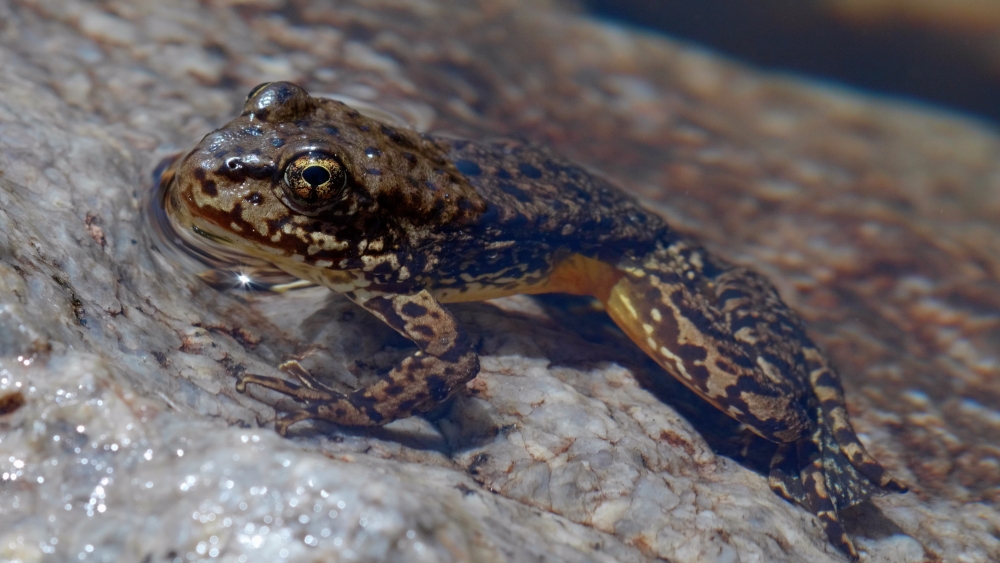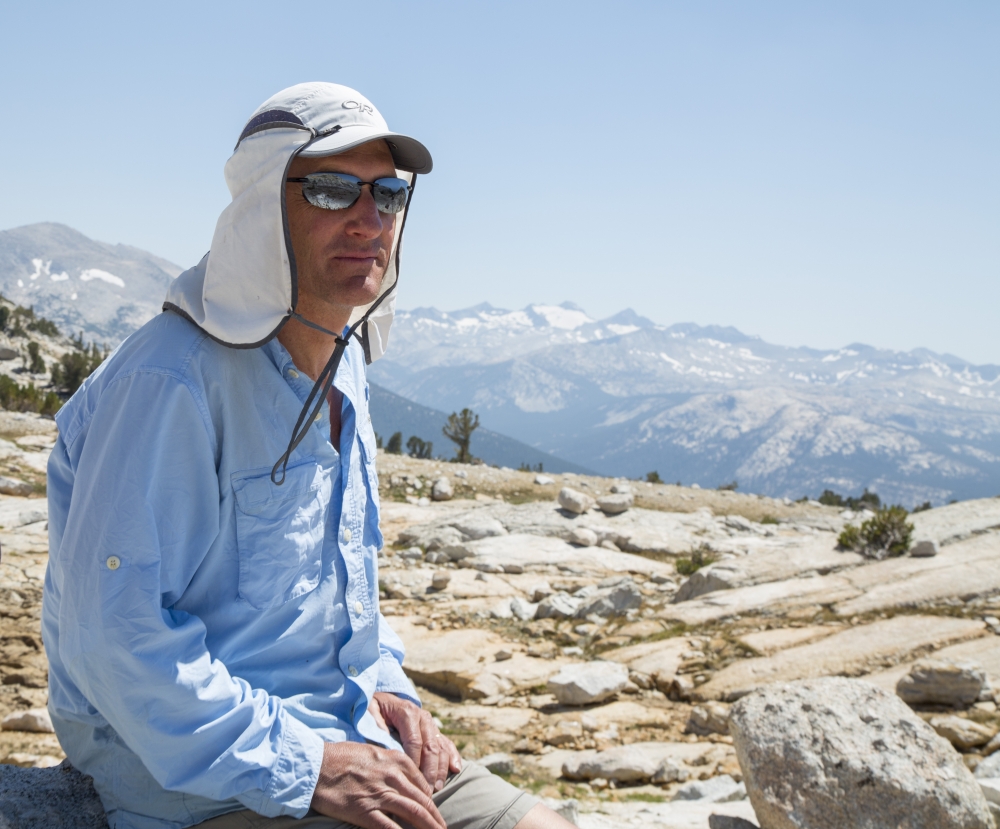
Location, location, location

In a box, within a canister, surrounded by snow, tucked tightly into a backpack strapped to one determined ecologist. Twenty at a time they travel, these unassuming, iconic frogs, departing places where they’re thriving for sites from which their species has vanished. Their mission: population recovery.
In ecology-speak this is known as translocation — capturing, transporting, then releasing animals somewhere else, often to conserve the species. And when it comes to the Sierra Nevada yellow-legged frog, amphibian residents of Yosemite National Park left devastated by the chytrid fungus Batrachochytrium dendrobatidis (Bd), it appears to be working.
UC Santa Barbara ecologist Roland Knapp has been leading a team of field crews — in collaboration with the National Park Service, U.S. Geological Survey and U.S. Fish & Wildlife Service — to save these frogs by reintroducing them to lakes from which they have disappeared because of Bd. The results of these novel experiments might provide important insights into how amphibian populations worldwide that have been impacted Bd might be recovered.
“Sierra Nevada yellow-legged frogs were devastated by Bd following its spread across these mountains,” said Knapp, a research scientist based at the UCSB-managed Sierra Nevada Aquatic Research Laboratory in Mammoth Lakes. “But a few populations survived and appear to be evolving some degree of resistance to this pathogen, allowing them to recover despite the ongoing presence of Bd. Using frogs from those recovering populations to reestablish populations that were previously eliminated by Bd — that hasn’t been done much before. It’s good news for frogs for sure.”
Because few examples exist in which reintroduced amphibians were able to recover in the face of ongoing Bd infection, Knapp said, describing the fates of these populations is critically important. He and co-author Maxwell Joseph, a data scientist at the University of Colorado-Boulder, have now published their new findings in the paper “Disease and climate effects on individuals drive post-reintroduction population dynamics of an endangered amphibian,” in the journal Ecosphere.
“This paper shows that we can facilitate recovery by translocating frogs from places where they are recovering naturally to places where they were previously driven to extinction — either by disease or by fish or both,” said Knapp. “They persist despite the disease and become established, at least in some cases. If you rely on natural recovery, success will be limited. We’ve shown that we can move the frogs to habitats to which they could never return by themselves (because of introduced predatory fish in interconnecting streams) and develop new populations. That’s an important advance.”
It’s been a long time coming — quite literally. The first two translocations of frogs were conducted more than 10 years ago, and Knapp and Joseph have been following those frogs ever since.
Translocated into sites from which their species had previously been killed off by Bd, these new arrivals face challenges from disease and from variable winters (the frogs spend winter under the ice, getting by on energy reserves built up over the summer). By repeatedly catching the same frogs over several years, the researchers are able to track their health and survival, and determine whether the translocated populations are growing or shrinking.
Coupling Knapp’s long-term data with the novel statistical models developed by Joseph enabled the researchers to uncover key insights into how disease and climate together influence the persistence (or not) of these new populations.
“What we really want to know is how infection load — a measure of how infected a frog is — changes over time, and we need to keep track for every individual in the population,” Joseph said. “But we don’t know exactly how many individuals there are in the population and we don’t observe them all at every visit. So we decided, let’s model the data that we wish we had for every individual and use the data from the subset of individuals that we caught to inform that model.
“For disease ecology as a field, being able to focus at the level of individual animals in wild populations is definitely a frontier,” Joseph added. “We haven’t had the necessary computational tools to do that until recently. With today’s computational resources, we can better understand how differences among individuals affect the fate of populations — do they persist or do they go extinct?”
Of the two frog populations detailed in the paper, one is persisting — with hundreds of new animals born since their reintroduction. The other has failed to thrive and appears on the verge of extinction. The researchers believe that the difference in outcomes at the two sites is being driven the varying, lingering effects of Bd: infections are lower in the thriving population and higher in the group that is failing.
“Despite still having major effects on frog populations, disease is unlikely to doom this iconic species in Yosemite National Park,” Knapp said. “Since the early translocations described in this paper, many additional translocations have been conducted in Yosemite and the majority of those populations show signs of becoming established.
“Translocations are a viable conservation measure to re-establish populations of frogs that have been wiped out by Bd, assuming that large donor populations are available,” he continued. “To facilitate recovery at a larger scale, across Yosemite and the entire range of the frog, we ultimately want to be able to predict in which habitats reintroduced frogs will survive. In the future, we hope to use the outcomes of all these translocations to identify the characteristics of sites that maximize the chance of successfully reestablishing frog populations. We are probably a decade away from that but that’s where I want this to go. And having long term data and powerful analytical tools is the only way we’re going to eventually get to that point.”
Added Knapp, who has been studying how best to recover yellow-legged frogs for decades, “I’m optimistic that with a little help these iconic frogs will once again be able to thrive in the Sierra Nevada.”



